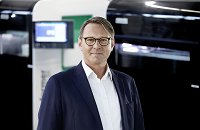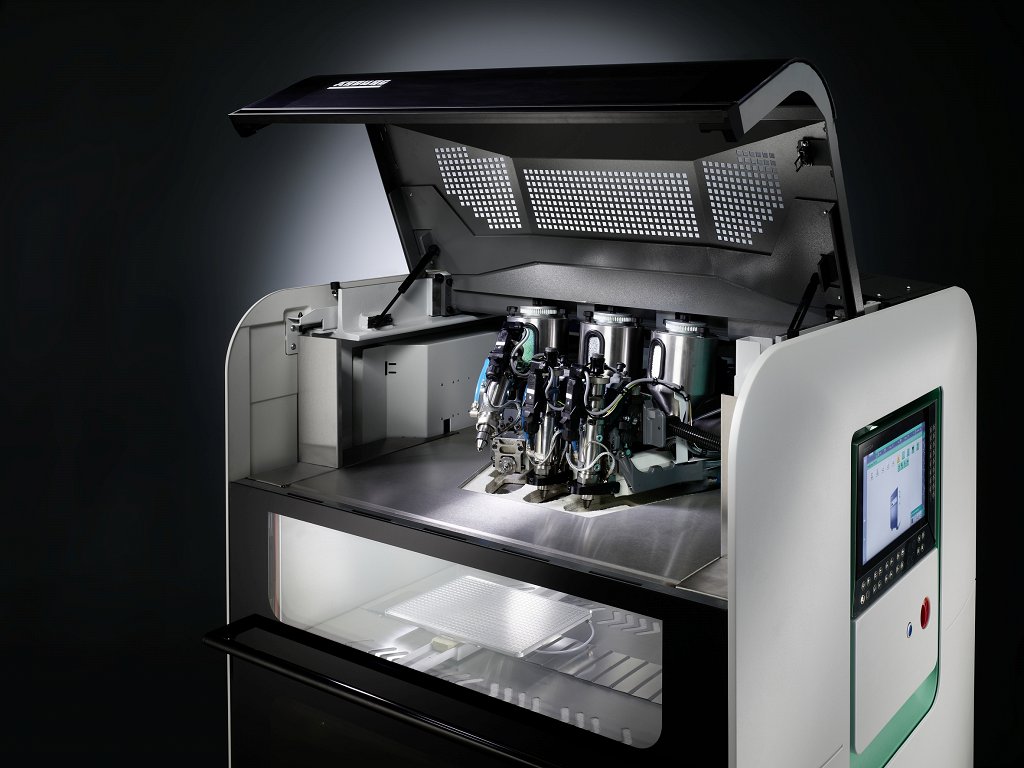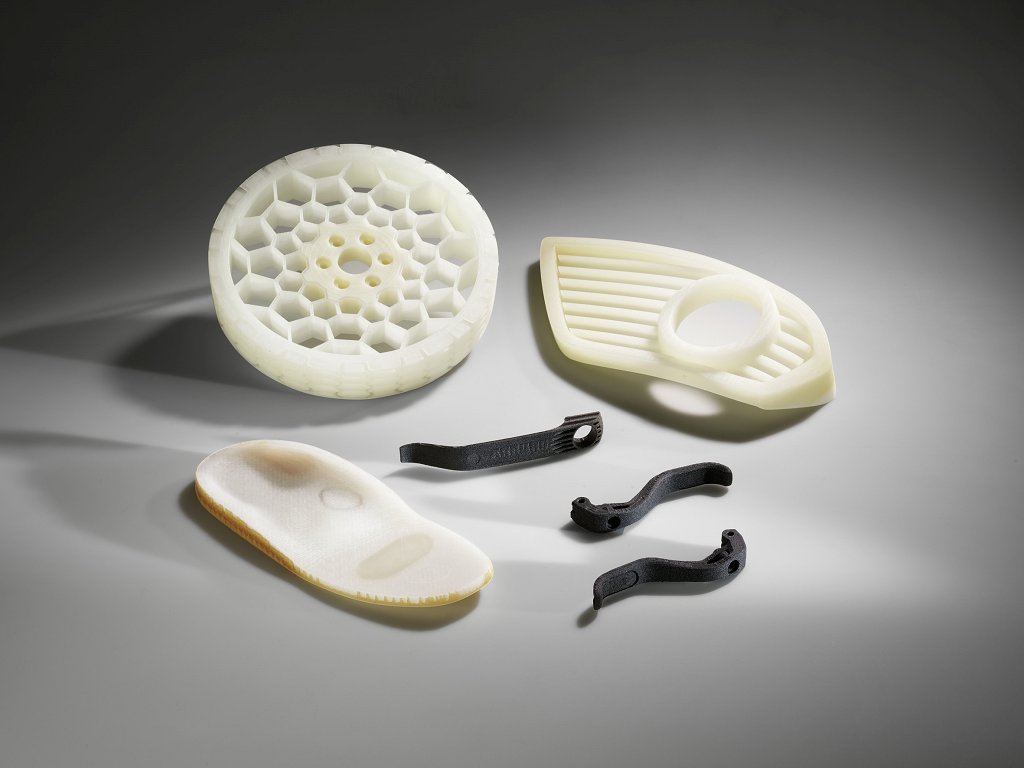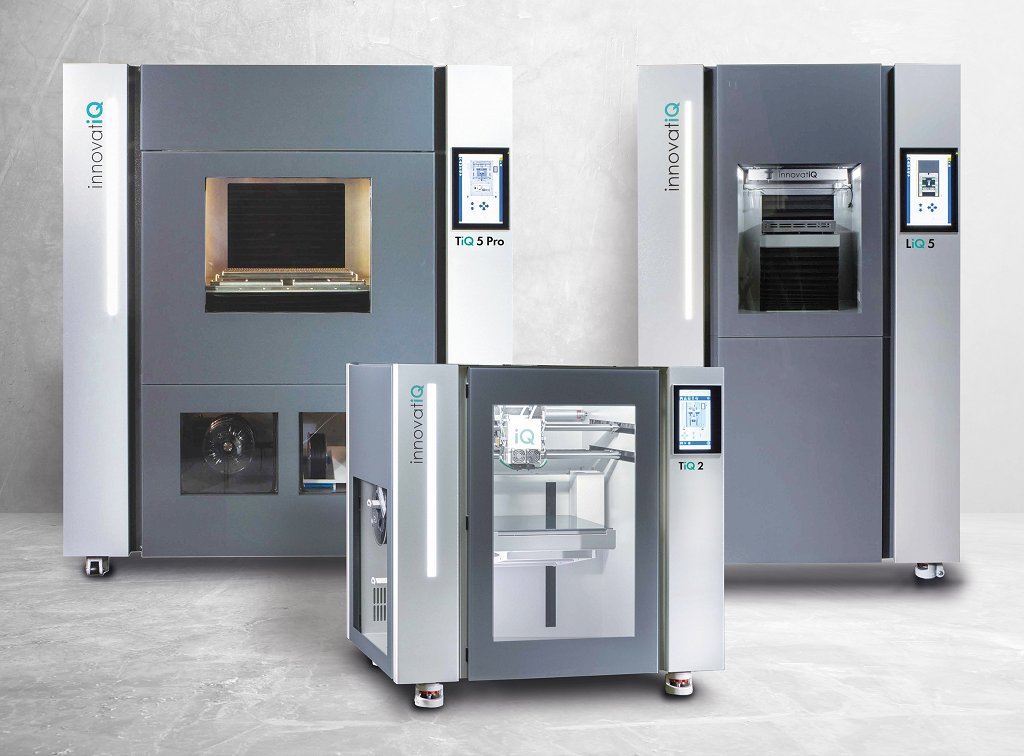Additive processing of high-temperature plastic, carbon fibres and liquid silicone
25.09.2023
At Formnext 2023 in Frankfurt, Germany, ARBURGadditive will be presenting its complete range of products for industrial additive manufacturing based on granulates, filaments and liquid silicone (LSR) at Stand D79 in Hall 12.1. One highlight will be the new 750-3X high-temperature Freeformer from ARBURGadditive, which produces resilient air distributors from certified Ultem original granulate. TiQ and LiQ series 3D printers from innovatiQ will be demonstrating the processing of fibre-reinforced filaments and certified LSR. There will also be many sample components on display, including brand-new APF components made of short-fibre reinforced thermoplastics.
 "Formnext is undisputedly the world's leading trade fair for additive manufacturing technology and 3D printing and one of the most important trade fairs of all for us and our markets," says Dr Victor Roman, Managing Director of ARBURGadditive. "This is a chance for us not only to showcase our technical achievements, but also to observe further developments in this highly dynamic market of the future."
"Formnext is undisputedly the world's leading trade fair for additive manufacturing technology and 3D printing and one of the most important trade fairs of all for us and our markets," says Dr Victor Roman, Managing Director of ARBURGadditive. "This is a chance for us not only to showcase our technical achievements, but also to observe further developments in this highly dynamic market of the future."
Freeformers for high temperature and soft materials
With the freeformers, fully functional components and small series based on original plastic granulates can be industrially additively manufactured using Arburg Plastic Freeforming (APF), even from very soft materials (up to hardness 28 Shore A) or in hard/soft combinations. The machines are generally suitable for sophisticated applications in medical technology, the automotive industry and aerospace.
At Formnext 2023, the new Freeformer 750-3X in high-temperature version will be producing geometrically sophisticated air distributors from original Ultem 9085. The high-end machine has three discharge units and, from the outside, is indistinguishable from the Freeformer 300-3X. However, at around 750 square centimetres, the part carrier is around 2.5 times larger. In addition, data processing and the Gestica controller, which is developed and manufactured by Arburg in-house, have been optimised in terms of process stability and component quality, and build time has been significantly shortened. The result is significantly reduced costs per component and lower material usage. The temperature of the build chamber can be raised to 200 degrees Celsius, and the granules are plasticised at up to 450 degrees Celsius.
 In the high-temperature Freeformer 750-3X with three discharge units, the temperature of the build chamber can be raised to 200 degrees Celsius, and the original granulate is plasticised at up to 450 degrees Celsius. Photo: ARBURG
In the high-temperature Freeformer 750-3X with three discharge units, the temperature of the build chamber can be raised to 200 degrees Celsius, and the original granulate is plasticised at up to 450 degrees Celsius. Photo: ARBURG
A second Freeformer 750-3X will be producing orthopaedic insoles up to shoe size 50. Thanks to the APF process, certain parts of the insole can be individually reinforced and others specifically designed to be soft – either through a multi-material combination of e.g. hard PP and soft TPE or by adjusting the filling density. This sample part is also used to show how build time can be significantly reduced through enhanced software features, for example, and lattice-shaped support structures. The third APF exhibit, a Freeformer 200-3X, is specially designed for processing soft materials.
Short-fibre reinforced components and small series
"We are experiencing high demand for additively manufactured components made from short-fibre reinforced thermoplastics," says Simon Leitl, Director Development at ARBURGadditive. "At Formnext, we will be happy to demonstrate our current progress in the APF process with the Freeformer using the first sample components for various industries. This includes the development of a modified discharge system, for example.
 At Formnext 2023, ARBURGadditive will also be presenting a wide range of additively manufactured sample components as hands-on exhibits. Photo: ARBURG
At Formnext 2023, ARBURGadditive will also be presenting a wide range of additively manufactured sample components as hands-on exhibits. Photo: ARBURG
The suitability of the APF process for efficiently producing small batches will also be demonstrated using a platform, closely fitted with 3D-printed holders made of PA, as an example. Arburg's experts will also be happy to share their experience with interested parties from the fields of injection moulding and additive manufacturing.
TiQ series for fibre-reinforced filaments
The compact 3D printers in the TiQ series have a CNC control system and process filaments using the fused filament fabrication (FFF) process. The TiQ 2 is particularly economical and also ideal as an entry-level additive manufacturing solution thanks to its open material system. Loadable suction pads and mechanical grippers made of fibre-reinforced PA and PP with individualised fingers for picking up components, mounted on robot arms, will be on show in Frankfurt.
 The TiQ and LiQ series 3D printers from InnovatiQ are ideal for processing fibre-reinforced filaments and standard silicones. Photo: innovatiQ
The TiQ and LiQ series 3D printers from InnovatiQ are ideal for processing fibre-reinforced filaments and standard silicones. Photo: innovatiQ
Another exhibit, a TiQ 5 "pro", has integrated material drying and active build chamber temperature control. One component highlight is a “High-speed Water Scooter Board”, 3D-printed from fibre-reinforced filament using this high-performance printer. Its individual parts are laminated to form a functional prototype.
3D printing of automation components from LSR
All 3D printers from innovatiQ are operated using the intuitive industrial controller GestiQ-Pro. The optional SmartMonitoring system allows several printers to be monitored simultaneously during production. LAM (liquid additive manufacturing) technology can be used to print items such as bellows, soft grippers and end-of-arm tooling (EoAT) for automation, as well as industrial seals and nozzle closures in various Shore hardnesses – all with high process reliability.
Formnext 2023 will see the first demonstration of the processing of Shin-Etsu's extensively medical and FDA-certified standard LSR KEG-2003H-30A/B. This can be used to manufacture implants and products for the food sector, for example. The 3D-printed components have virtually the same flame-retardant, UV and temperature-resistant properties as injection-moulded parts.
ProcessLog
Two PC workstations will also be used to demonstrate how the "ProcessLog" customer portal app can be used to seamlessly document and trace every single APF component. This allows a wide range of process and build job data to be displayed in clear graphical form and documented – which in turn ensures transparency, high part quality and can significantly reduce rejects and error rates.
Further information about Arburg can be found at www.arburg.com





































